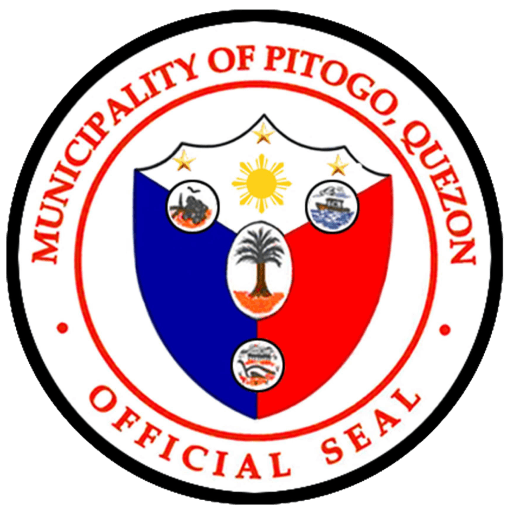History of Pitogo, Quezon
The history of Pitogo may be divided roughly into three periods. The first may be the organization period; second is the early Spanish period under the Capitans; and third the American and present period.
The first period was the organization of settlements because
Pitogo was established in several other places before it was founded in its present location.
Ferdinand Magellan discovered the Philippines in 1521, but the history of Pitogo commenced in 1754. The governor-general was Pedro de Arandia in 1755 and it was a period of Moro troubles because Ali Mudin, the sultan and Bantilan, his brother, were quarrelling for the throne
in Jolo.
In 1754, one Juan Mauricio founded the town up in the Mayuboc River, now known as Pinagbayanan. It was the period when the Bantilan pirates could reach as far as Mindoro, and from there, the Moros came along these coastal towns of Kalilayan (Tayabas). Mayubok, therefore, was first raided by the Moros, under Juan Mauricio.
The next ruler was Alejo Bautista in 1757. Again, the Moros remembering the place, visited Mayubok and set it on fire. In the hurry of the people, the biggest church bell was placed in the banca, but, the banca capsized at Aasnan and expert divers tried to recover the historical bell in vain.
In 1760, Bernabe Rafael established the town at Cawayanin. The small town was already well built when Moros destroyed it. The image of Saint Paul (the patron saint) was lost. It was later found in a nearby barrio. The people stayed for a short time in the said barrio naming it
Adia, meaning safety. Under the governorship of Rojo in the years 1759 to 1761, the British came and captured Manila in 1762. It was during this period that the founding of Pitogo took place.
The founder was Buenaventura Salvador. It was in 1766 when Salvador selected a well located hill, the Maaliw Hill and there were a few fishing huts at the place. The hill was selected because from a native watchtower (Castillo), the approach of Moro Vintas could at once be
detected from afar. There was a very big Pitogo tree at the promontory.
The founding of Pitogo became very sure when a strong ruler in the person of Geronimo Santiago took care of the Poblacion. He was known by the name Maniago and Moros feared him. The patron saint became famous too. The belief was that Saint Paul was miraculously protecting the new town. Maniago ruled the town for almost ten years, from 1771 to 1780 which was a period of Moro piracy. For the years 1778-1793, Mamburao, Mindoro was made the home of these Moro sea robbers. However, a period of progress came when the Governor General was Jose Basco y Vargas, 1778. He was appointed Alcaldes Mayores.
Juan Encarnacion became the ruler in 1781. This time the image of St. Paul was found under the Pitogo tree on Maaliw hill. This was taken to mean that St. Paul liked the place to be the permanent location of the Poblacion. In one occasion when the Moros were about to enter
the town, the place was covered by darkness, and so the Moros went away.
In 1814, another Mauricio became the ruler. Through the carelessness of the inhabitants, the town was burned for the first time.
Geronimo de los Angeles was a good ruler of Pitogo. The stone church was built where St. Paul was once found on Maaliw Hill in 1817.
